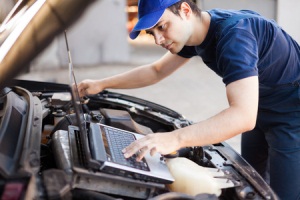Artificial intelligence and data science are two main technologies that forms the processes of the automotive. Since 2017, Udacity selected a group of 18 talented engineers (out of hundreds of applicants) to form the Self-Racing Cars team Udacity offer the first self-driving Nanodegree program. The program was Built in partnership with Uber, BMW, Mercedes-Benz, and Nvidia. After a huge success, Udacity introduced another Nanodegree program for the beginners. At last, MIT and university introduced their courses in the automotive industry, says Joseph Zulick of MRO Electric and Supply.
So, if AI have existed since 1950 why it is matter to Automotive industry now? there are two answers for this question. A short answer which states “due to the raise of deep learning and greater computing power, and the availability of large amounts of data in the cloud”. A more detailed answer which reflect all these technologies together.
The huge advance in machine learning algorithms due to the deep learning; moreover, With AI as an raising common technology platform, the automotive industry is set to test various changes in the following years. As several issues considered during the manufacturing process in terms of AI: vehicles become more integrated, and complex systems. New functions are added according to standards.
According to the IHS report, in 2015, the install rate of AI based systems in new vehicles was only 8%; this number is expected to increase to 109% in 2025. This massive increase back to the use of AI systems in vehicles would be standardised across autonomous vehicle applications. By the end of 2015, Toyota and Tesla‘s founder, Elon Musk, each announced investment amounting to one billion US dollars in AI R&D almost at the same time. The aim of these research developing connected, autonomous, and AI based systems that able to do optimal decisions in several situations.
 Through techniques such as IoT and deep learning, researchers were able to develop a system that would help in decision making around the car. While AI automotive applications that involve self-driving cars receive the most attention, this is only one of many uses cases for artificial intelligence in the automotive industry. Now, let’s have a deep look for different use cases will drive the automobile industry in the future:
Through techniques such as IoT and deep learning, researchers were able to develop a system that would help in decision making around the car. While AI automotive applications that involve self-driving cars receive the most attention, this is only one of many uses cases for artificial intelligence in the automotive industry. Now, let’s have a deep look for different use cases will drive the automobile industry in the future:
Driver-assist features
While several few companies are working on fully automated self-driving cars, an increasing number of manufacturers are working in easing that direction. By introducing features that assist the driver without actually taking the wheel through the intelligent transportation system in the car. These features include advanced safety features. Pedestrian, Automatic braking, collision avoidance systems, and cyclists’ alerts, and cross-traffic alerts.
Internet of Things
By 2020, researchers estimate that nearly 250 million cars will be connected to the Internet according to McKinsey and Cisco. The new vehicles will come with new equipped that would serve the new features and applications. Basically, most equipment would include smart sensors, connectivity modules, and big-data enhanced geo-analytical capabilities. In short, three major changes, both technological and functional, that the IoT will bring fairly soon for car companies:
- It will bring driverless car ubiquity closer.
- It will turn carmakers into technology companies.
- It will open up new areas for revenue.

As a result, it is expected IoT is impacting automotive industry in new opportunities and challenges. One of these challenges is through over-the-air software updates, manufactures and dealers can update the vehicle’s firmware and enable premium features. A fully diagnostics system that can discover issues through sending performance data directly to the manufacturer through the cloud. A connected vehicle could use IoT technology to report problems or schedule repairs.
Conclusion:
Artificial intelligence revolutionises the automotive industry. Huge investment occurred from technologies leaders such as Google, Tesla, Uber, and major automotive companies in this domain. It is not opportunity for huge companies but for startups as well. Moreover, new opportunities and job vacancies appear and academic courses shine in this domain. Which reflects the importance and needs in this domain for developers and software engineers. This article acted as an introduction between the merge of AI, IoT, and automotive industry. There are more to consider such as vehicle communication, risk assessment, AI features.
The author of this blog is Joseph Zulick writer and manager at MRO Electric and Supply
Comment on this article below or via Twitter: @IoTNow_OR @jcIoTnow










